Equilibre Hable
When I was a junior in high school, my family relocated from Illinois to California. We lived in Petaluma for one year while my parents looked for property on which to build a house. While at Casa Grande High School, I took an art class from Ed Hairston. He gave us an art project which was to design a board game. Well, I really didn’t like board games since I lost almost every time I played. So instead, I decided to make a 3D maze.
I have not been able to locate Mr. Hairston, and I doubt he realizes how far his assignment has gone. If you know him, or are him, email me!
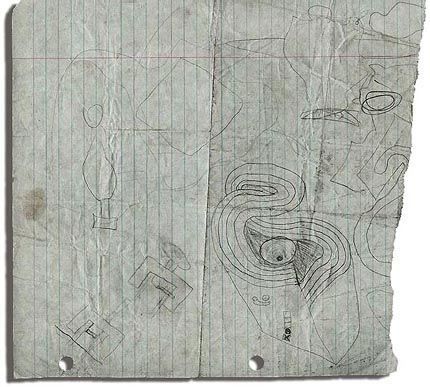
Having an idea is easy. Drawing it out can be challenging. Making it physically is an altogether different experience. This reality is something I try to explain every day to my students. In coming up with an idea for Mr. Hairston’s assignment, I drew up a design for a Marble Race Game. It was to have four colored marbles in four adjacent tracks. Players would compete to see which marble could make it to the bottom first. How would one release all balls at once? How would the winner be determined? How can a curved track guarantee that all four tracks are the same length? (That is why it is a figure-8.) Ultimately, I decided that the game was boring and random in its outcome.
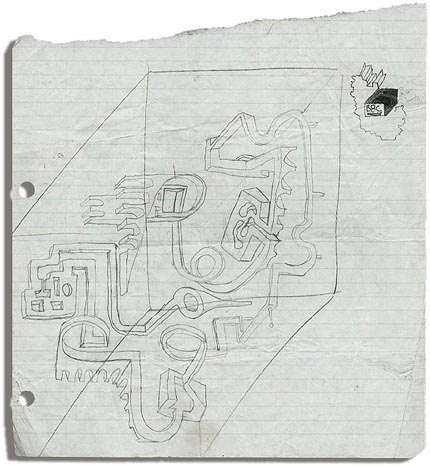
So I flipped the paper over. Thought: how can I make a 3-dimensional labyrinth with a BB running around in it? I began to sketch and realized that it couldn’t be like the game “Labyrinth”, with holes as obstacles, or it would be impossible to see. I drew a cube, and along the inside surface was a continuous road; an aqueduct/bridge/Great Wall of China-like path. At the end was a cup for the ball to rest. There was no top or bottom. It was relative to how you turned the cube. This drawing was presented to Mr. Hairston, who directed me to make a model.
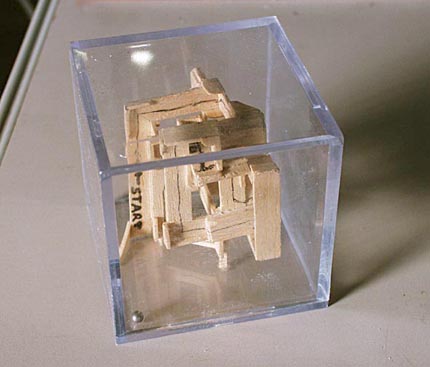
The model was constructed of balsa wood and glued with Elmer’s Glue-All. When it came time to find a box to put it in, I searched and searched for something appropriate and didn’t find anything. Finally I went to a plastics shop and had them make a 3″ cube. One side was left open so I could put my labyrinth into it. The thing cost $20 and was amazingly messy and crude! (That cube lasted for decades, and finally broke to pieces when someone dropped the game on the concrete. The one in the photo is a baseball holder from Tap Plastics.) Making what I drew was impossible from the ¼″ wide balsa wood strips that I got at a model shop – especially in such a small cube. The self-supporting and freestanding structure (upon which all future designs would be based) was the only way to go. This was when it dawned on me to take the ball from one side of the path to the other, utilizing as much surface area as possible.
Over time, parts of the model changed:
- The original ball was literally a BB shot out of a BB-gun. Eventually it rusted and was changed out with a precision ball bearing.
- People complained that they didn’t know where to go on the path, so I unfortunately used a felt tip pen to draw a line from beginning to end.
- Originally there was a “billboard” with my signature and the name “EQUILIBRE HABLE” projecting from sticks on the back of a track. Unfortunately this was removed because I no longer liked the name “EQUILIBRE HABLE”. The billboard represented a place where a timer could go.
- Sadly, the original “Finish Box” was removed to allow the player to see the end point better.
- Railings were added in difficult areas, especially at the beginning, which was notoriously difficult.
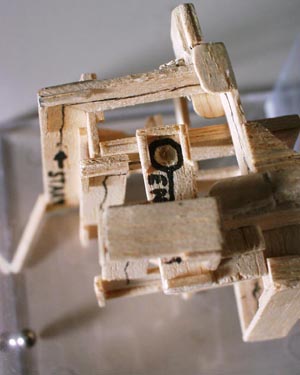
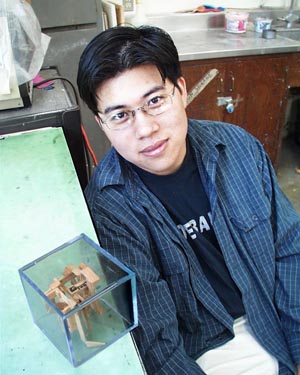
The first model, called “Equilibre Hable” meaning balance skill, was a hodgepodge of ramps and railings and was both hopelessly ugly and instantly intriguing. It was so difficult that I still have never gotten to the end! I wanted to number every change in direction for keeping score, but my pen bled too much on the balsa wood and it never worked out. To finish, you’d need a score of 32; my personal best was 24. I felt that it had to be intricate to hold interest and build coordination. The Principal of Casa Grande borrowed it for a month or so, and this model became my family’s pastime at nearly every gathering for years to come. My student, Matt Wong, is the only person to finish Equilibre Hable... that was in 2002... and he did it on his first try!
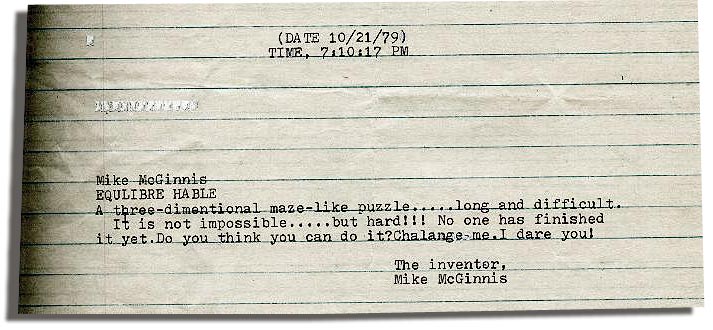
In October of 1979, the game was admitted into an “Artist’s Toy Show” in Santa Rosa, California. The typed description, above, was written to accompany it in the show. Equilibre Hable sat under the docent’s desk for fear that someone would steal it. My family and I had just moved to Middletown, an hour away from Santa Rosa, over very curvy mountain roads. This is where I spent my senior year in high school. Thinking back, I don’t think I even showed the game to anyone there. Middletown High School had no art classes, but they did have shop classes, which I liked.
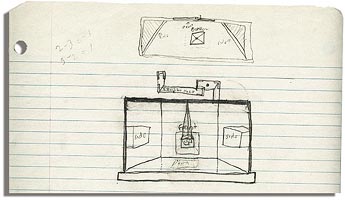
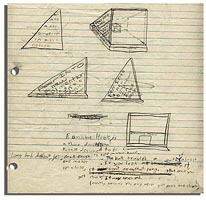
The show brought dreams of success. I drew up a display idea for Equilibre Hable, but never built it. I was naïve, thinking some big toy company would see the game and put it in production. My delusion was that a good concept was the only thing needed to get something made - that someone, a professional in the toy industry, would “get” the concept and design a beautiful, quality product. This is not what happened.